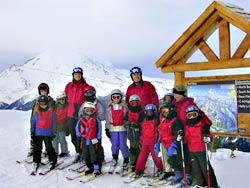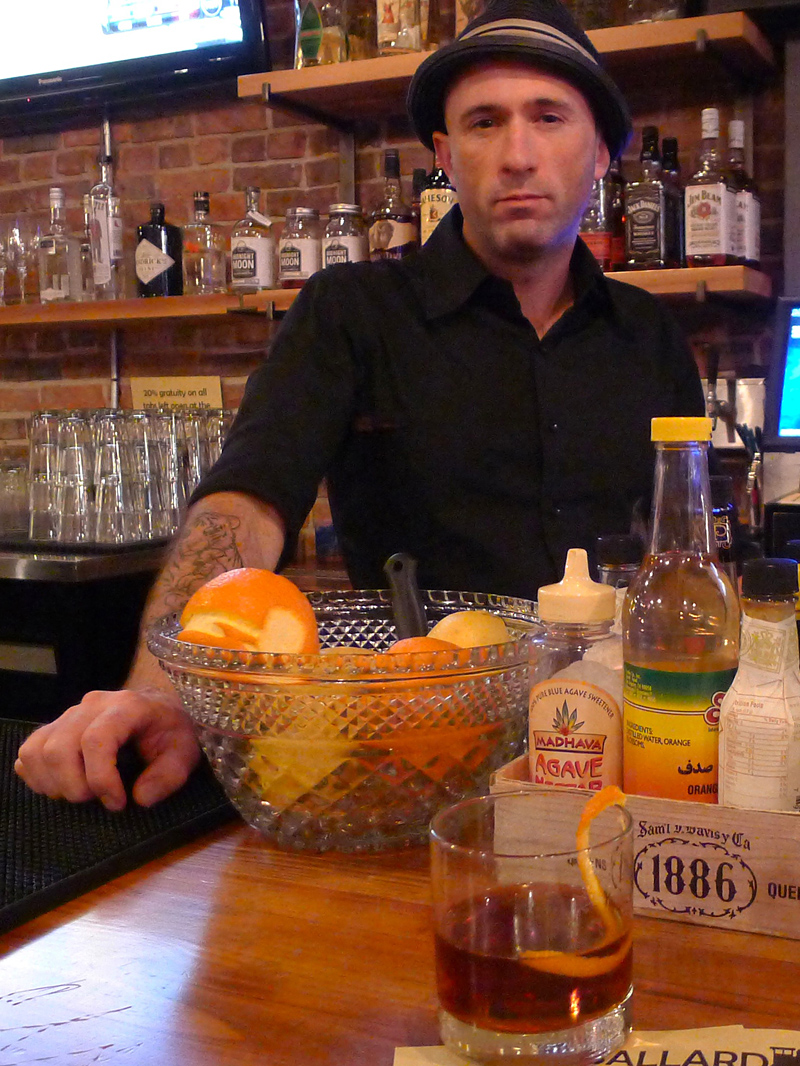It sounds like the plot for a bad Jason London movie: A ski mogul with an eye on the bottom line takes over a local resort and cancels contracts with the community-based ski schools that have traditionally served the slopes, then asks the ski bums to join the corporate ranks. Lessons double in cost. Longtime skiers and snowboarders are outraged. The National Forest Service washes its hands of the matter. Will the underdog community schools yield to big business? Can snow-loving families afford the increased cost of lessons? Will the feds step in? Coming in winter 2008: Cold War, starring London, Tara Reid, Stephen Baldwin, Cuba Gooding Jr., and a pack of drunken sled dogs.
Trite as this make-believe plot may sound, it’s not far from reality at Crystal Mountain, where John Kircher and Boyne USA, owners of the Mount Rainier resort for the past nine years, are jettisoning the concession ski schools that have traditionally managed multiweek programs in the Northwest, and consolidating instruction on the mountain to a single in-house school.
In a letter sent two weeks ago to a handful of schools that have served the resort since its inception (Crystal refuses to comment on matters directly related to the decision), Kircher states that cutting ties is the result of tough times in the ski industry, with problems including increased fuel costs, lack of qualified staffing, low customer-retention rate, and erratic weather. Herein, Kircher writes: “In times like these we are forced to come up with new and creative ways to manage our business,” later adding that the change, “[w]ill allow us to create standards of excellence based on specific skiing/riding models and customer service models.” The letter concludes by inviting schools to “[b]ecome part of our family and share the Crystal Mountain experience,” an offer the now-unemployed instructors took as an invitation to work for Crystal’s in-house school.
For those school directors who were the recipients of the notice, Kircher’s words were not well received.
“I took it as a slap in the face,” said Russ Brown, director of the Olympia Ski School, which just finished its 50th year of instruction and will now close. When Brown forwarded Kircher’s notice on to his customers, they responded with their own letters.
Christopher Wolf wrote to Brown: “When I first enrolled my girls in the Crystal Mountain Ski Program, they strongly disliked the social instability of attending classes where each Saturday meant a new instructor and a new set of students that they didn’t know.Every time we drove up to Crystal, I had to listen to a two-hour tirade about how they didn’t like skiing and didn’t want to take lessons. That all changed with the Olympia Ski School. They looked forward to going to ski school every Saturday and invited several of [their] best friends to join them. They have developed a true love for this wonderful sport. Their friends, their friends’ parents have become actively involved in skiing at Crystal.”
Hayley Cole was more succinct in her letter to Crystal, writing, “I cannot see how reducing access to your facility is going to help your bottom line.”
Furthermore, families accustomed to community ski-school prices might be in for a case of sticker shock when it comes time to register next winter: Multiweek classes at Crystal cost more than twice as much as they did at the shuttered schools. And Brown is quick to point out that all instructors, whether they work for Crystal or schools like his, are certified and graded by the same organization, the Professional Ski Instructors of America (PSIA), saying, “When they talk about level of excellence, I only had 13 instructors; and under certification, we had six level threes (the highest grade), two level twos, and three level ones. I’d like to see Crystal Mountain come up with those kinds of numbers.”
According to Dave Moffett, the practice of using concession ski schools started shortly after his parents, Webb and Virginia, founded the Snoqualmie ski area in the late 1930s. (The first schools were sponsored by The Seattle Times and the P-I.)
“I think, at that time, [independent schools were] an extension of the marketing of learning how to ski,” says Moffett, who followed in his father’s footsteps as director of the Summit at Snoqualmie for 17 years. “It was finding people interested in skiing and having [the schools] do the marketing to bring [skiers] up. My father was an engineer, and he didn’t have as much interest in marketing.”
Ingrid Simonson was the longtime head of the concession ski school at Alpental, one of four areas that make up the Summit at Snoqualmie, before Alpental, in a move similar to Crystal’s, bought out her contract in 1999. “Webb Moffett had this all figured out,” says Simonson, now the president of the Pacific Northwest Ski Association. “You let other people do the work, hire employees, and sell lift tickets.”
All parties involved in the current controversy agree that concession ski schools are a Pacific Northwest phenomenon, the result of Moffett family tradition and the day-trip nature of Washington skiing. According to Dave Moffett and Simonson, in areas such as Vail or Whistler, most visitors stay for a week or more at a time and don’t return until the following year, typically requiring just a onetime tune-up lesson; but places like Crystal and Snoqualmie rely on the same customers returning throughout the season. “Here, you’re teaching people how to ski,” Moffett says.
When Tacoma skiers Pat and Allan McLeod opened the slopes of Crystal to the public in 1962, they, too, encouraged local ski schools throughout the Puget Sound to bus customers up for lessons.
Recently, though, tradition in the Cascades has given way to the industry standard. Last year, Stevens Pass shut down all its concession contracts, merging anyone who would join into a single Olympic Ski School. With Crystal closing its doors to outside instructors, the last remaining resort to allow concession schools is the Summit at Snoqualmie, which allows 18 such private schools access to their lifts.
For Kevin McCarthy, president of the White Pass ski area (located west of Yakima on Highway 12), which cut ties with its concession schools shortly before he started running things in the early ’70s, consolidation is simply good business. “Why give business that’s occurring on your property to someone else? You need every penny you can get. They’re making a good call.” he says.
But for people like Brown, the issue is personal. “When [Boyne USA] first bought [Crystal] nine years ago, at contract meetings where we’d sit down, negotiate, and work things out, I always felt like, as a concession owner, they didn’t want us there,” he says. “John came from the Midwest, and they didn’t have [concession schools] there. We’re unique in the Northwest, in the world. It’s just a general feeling—we never felt valued. It’s kind of like that misplaced stepchild; I don’t know how else to put it,” he says.
Further complicating matters is the fact that Crystal is located on government land and operates under a “special use permit” issued by the National Forest Service. In addition to a percentage of Crystal’s profits going to the National Treasury, this means that the NFS has a significant say over business decisions that are made at Crystal and other local slopes, to the point that the resorts must seek approval for details as specific as the color and style of their buildings.
But in the case of the spurned schools, the NFS has chosen not to interfere. “Things we do have say over are safety and what kind of services are provided,” says Washington’s Forest Service director, Rob Iwamoto. “Obviously, ski school is one of those—but how business is arranged isn’t one of those. In general, who provides [the ski-school service] is a business decision. We just expect a level of service to be provided. We are not there to micromanage a business.”







